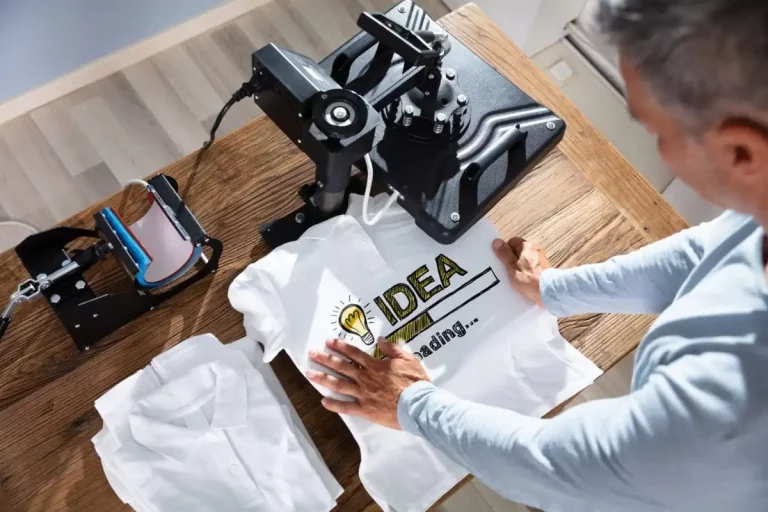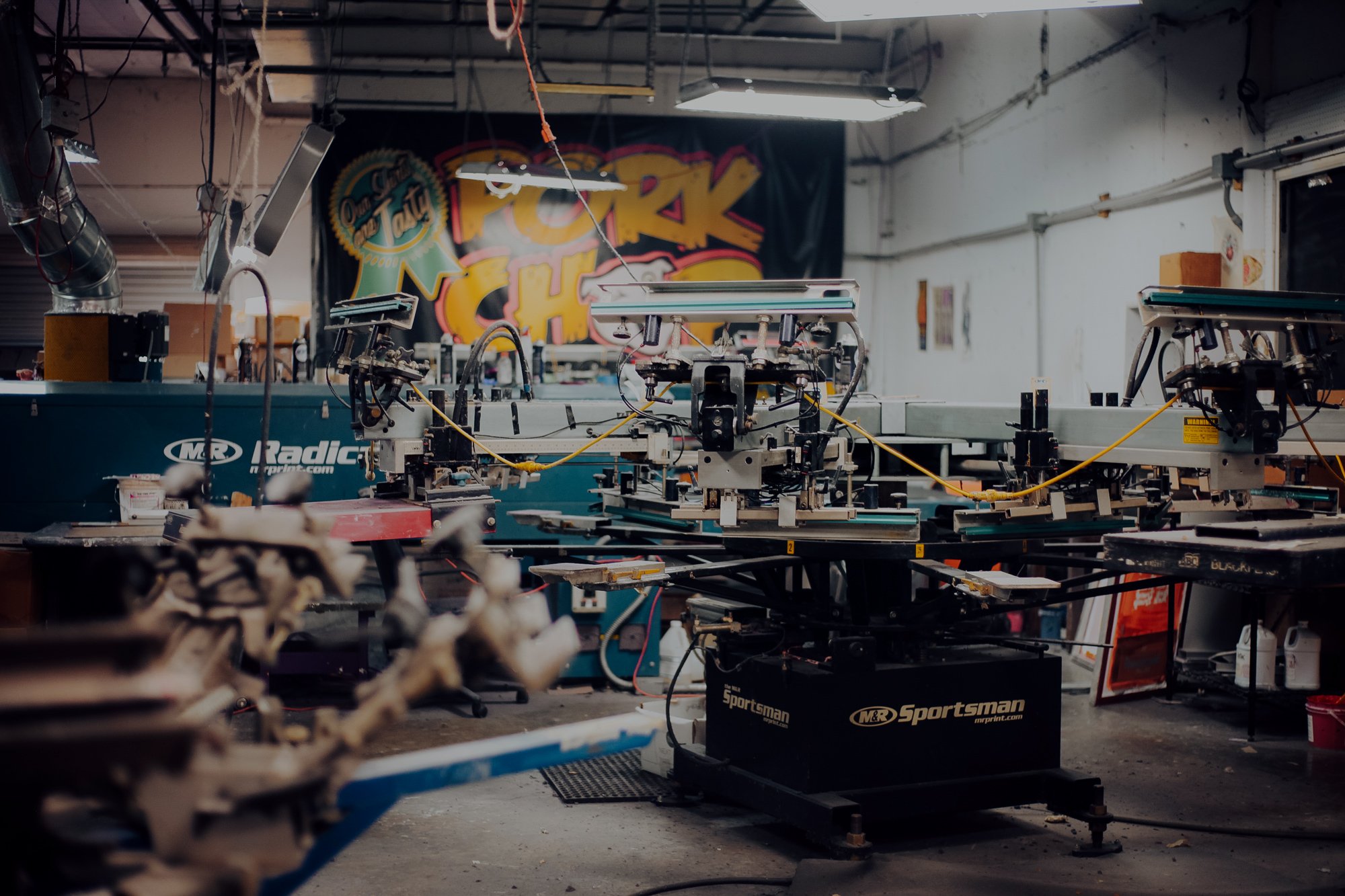Screen Printing Uncovered: Whatever You Required to Understand About T-Shirt and Garment Printing Techniques
If you've ever questioned exactly how those vivid layouts finish up on your favored t-shirts, you're in the best area. Screen printing is a remarkable technique that incorporates art with technique, using countless opportunities for creativity. Comprehending the principles, from tools to ink choices, can substantially influence your outcomes. All set to explore the essential components that make display printing an art kind? Let's discover the details that can boost your jobs.
The Basics of Display Printing: How It Functions
When you dive right into screen printing, you'll discover it's both a scientific research and an art. At its core, display printing involves developing a pattern, or display, that allows ink to travel through only in certain areas (screen printing kit). You begin by picking your style and preparing your display with a light-sensitive emulsion. When you expose this solution to light, it sets, leaving your style as a negative area.
Next, you'll blend your inks and prepare your printing surface. Setting the display over the fabric, then utilize a squeegee to press ink via the screen onto the garment. This process needs accuracy, as you want clear, lively prints. After printing, you'll cure the ink with warm, guaranteeing it adheres to the material and lasts via laundries. Each action is crucial, and mastering them will boost your display printing skills, changing simple garments into special, meaningful items.
Sorts Of Display Printing Techniques
As soon as you realize the fundamentals of screen printing, it's time to discover the numerous methods that can boost your designs. One prominent method is typical display printing, where ink is pushed through a stenciled display. This strategy is excellent for vibrant, dynamic shades. Then there's water-based ink printing, which supplies a softer feel and is environment-friendly, yet it needs a different approach to curing.
Another choice is plastisol printing, known for its longevity and brilliant colors, making it a preferred for many brand names. Experiment with halftone printing to produce gradient impacts and intricate styles.
Important Tools for Display Printing
To accomplish sensational results in screen printing, having the best equipment is basic. You'll need a strong screen printing frame, which holds the mesh that transfers your design onto the garment. Next, invest in premium squeegees; these are important for applying ink uniformly across the display.
Selecting the Right Inks and Materials
When picking inks and products for screen printing, you require to take into consideration the kind of ink that functions finest for your job. Consider material compatibility to ensure your layouts look last and terrific lengthy. Check out environmentally friendly ink alternatives to make your printing procedure much more lasting.
Kinds of Display Inks
Selecting the appropriate display ink is vital for attaining dynamic, long lasting prints that meet your job's demands. There are several types of display inks to examine. Specialized inks, such as metal or glow-in-the-dark, can include one-of-a-kind impacts to your designs.

Textile Compatibility Considerations
Recognizing textile compatibility is crucial for achieving top notch display prints, particularly because various products react uniquely to different inks. When picking inks, take into consideration the textile kind-- cotton, polyester, or blends. For cotton, water-based inks work well, supplying gentleness and breathability. Polyester, on the other hand, typically needs plastisol inks for better attachment and dynamic colors. If you're publishing on blends, you may need to make use of a combination of both types. Constantly examine your inks on example fabric to assure they stick appropriately and preserve color honesty. In addition, remember that textile weight and appearance can affect the last end result, so selecting the appropriate ink and material combination is crucial for your project's success.
Eco-Friendly Ink Options
Green inks are ending up being a prominent choice for display printers who intend to lessen their ecological influence while maintaining quality. When choosing inks, take into consideration water-based inks, which are much less hazardous and simpler to cleanse up contrasted to conventional solvents. These inks bond well with materials, supplying vivid outcomes without harmful chemicals. You may also discover eco-solvent inks that use fewer unstable organic substances (VOCs), making them a much safer choice for both your health and the planet.
Additionally, look for inks made from renewable energies, such as soy or vegetable-based choices. By selecting the best inks and materials, you'll not just develop spectacular layouts however also add to an extra lasting printing process. Make the button, and your prints will mirror your commitment to the setting!
Preparing Your Design for Display Printing

Submit Format Demands
To ensure your layout looks vibrant and sharp on fabric, you'll need to pay close attention to custom screen printing submit layout needs for display printing. Make certain your layout has a transparent background to avoid unwanted white edges on your prints. Maintain color modes in mind; CMYK is common for screen printing, so transform your RGB develops accordingly.
Shade Separation Strategies
Shade separation is an essential action in preparing your design for screen printing, and mastering it can considerably improve your print top quality. You'll need to break your layout right into private colors, as each color calls for a separate screen during printing. Begin by identifying all the shades in your style and develop layers for each one. You can make use of software like Adobe Photoshop or Illustrator to separate and different shades efficiently. Be specific to save each layer as a different file, usually in a style like TIFF or PSD. This precision not only guarantees exact color depiction however also simplifies the printing process. By focusing on shade splitting up, you'll achieve expert and dynamic outcomes in your screen-printed garments.
Resolution and Size
Achieving the most effective cause display printing starts with ensuring your layout has the best resolution and dimension. Ideally, your artwork needs to be at least 300 DPI (dots per inch) for sharp, clear prints. Your final item might look pixelated and amateur. if you make use of lower resolution.
When it comes to dimension, think about the dimensions of your print location. Design your art work to match the last print size, ideally developing it in the actual dimensions you'll be printing. By doing this, you'll prevent any kind of unforeseen scaling problems.
Constantly inspect your layout in both vector and raster formats. Vector graphics can be scaled without shedding quality, making them excellent for screen printing. Preparing correctly will guarantee your layout looks remarkable on every garment!
Step-by-Step Screen Printing Process
Display printing is a vibrant process that enables you to develop dynamic layouts on various surface areas. To obtain started, you'll require a screen, solution, and your picked ink.
After cleaning out the unexposed emulsion, your screen prepares. Establish it up on your printing surface area and straighten your garment under it. Put ink onto the display and utilize a squeegee to push the ink with the pattern onto the textile. Raise the screen meticulously and allow the print completely dry. Ultimately, heal the ink using warm to guarantee sturdiness. That's it! You have actually successfully display published your design.
Tips for Effective Screen Printing Projects
While you're diving right into your display printing projects, bear in mind that prep work is key to success. Beginning by gathering all your materials-- inks, displays, garments, and squeegees. A tidy office helps prevent unwanted errors, so clean before you start.
Next, verify your artwork is high-resolution and correctly sized for your garment. Examine your screen for appropriate exposure and clean it completely to avoid spots. When blending your inks, follow the supplier's standards to achieve the appropriate consistency.
Throughout printing, use even pressure with your squeegee for consistent outcomes. Do not rush; take your time to confirm each print meets your requirements. After printing, allow your garments completely dry completely before taking care of or packaging them.
Finally, constantly maintain a sample of your benefit future recommendation. In this manner, you can assess your progress and improve your methods gradually. Satisfied printing!

Often Asked Inquiries
For how long Does It Take to Establish a Screen Printing Work?
Establishing a display printing task commonly takes around half an hour to an hour. You'll prepare the screens, mix inks, and change journalism. The time varies based upon intricacy and experience, so remain arranged!
Can I Print on Different Textile Enters Utilizing the Exact Same Technique?
Yes, you can publish on various fabric kinds making use of the same method, yet you'll require to adjust your inks and settings. Some textiles soak up ink in a different way, so trying out guarantees the finest results for each product.
What Prevail Blunders to Prevent in Display Printing?
When screen printing, prevent common errors like utilizing the wrong ink, disregarding correct exposure times, or skipping pre-press checks. Constantly evaluate your arrangement and keep clean screens to assure quality results each time.
Exactly How Can I Correctly Tidy and Preserve My Screen Printing Equipment?
To appropriately tidy and preserve your display printing equipment, you ought to frequently clean screens with proper solvents, check mops for wear, and guarantee all devices are saved completely dry and dust-free. Uniformity avoids expensive repairs and improves performance.
Is Display Printing Eco-friendly Compared to Various Other Approaches?
Display printing can be much more ecologically pleasant than various other approaches, specifically if you make use of eco-conscious materials and water-based inks. By picking sustainable supplies and techniques, you lower waste and lessen your effect on the planet.
Display Printing Uncovered: Everything You Need to Know About Tee and Garment Printing Methods
At its core, display printing involves developing a stencil, or display, that enables ink to pass via only in particular areas. Setting the screen over the material, then make use of a squeegee to push ink through the display onto the garment. One popular technique is standard display printing, where ink is pressed through a stenciled display.When picking inks and products for display printing, you require to take right into account the type of ink that functions ideal for your task.